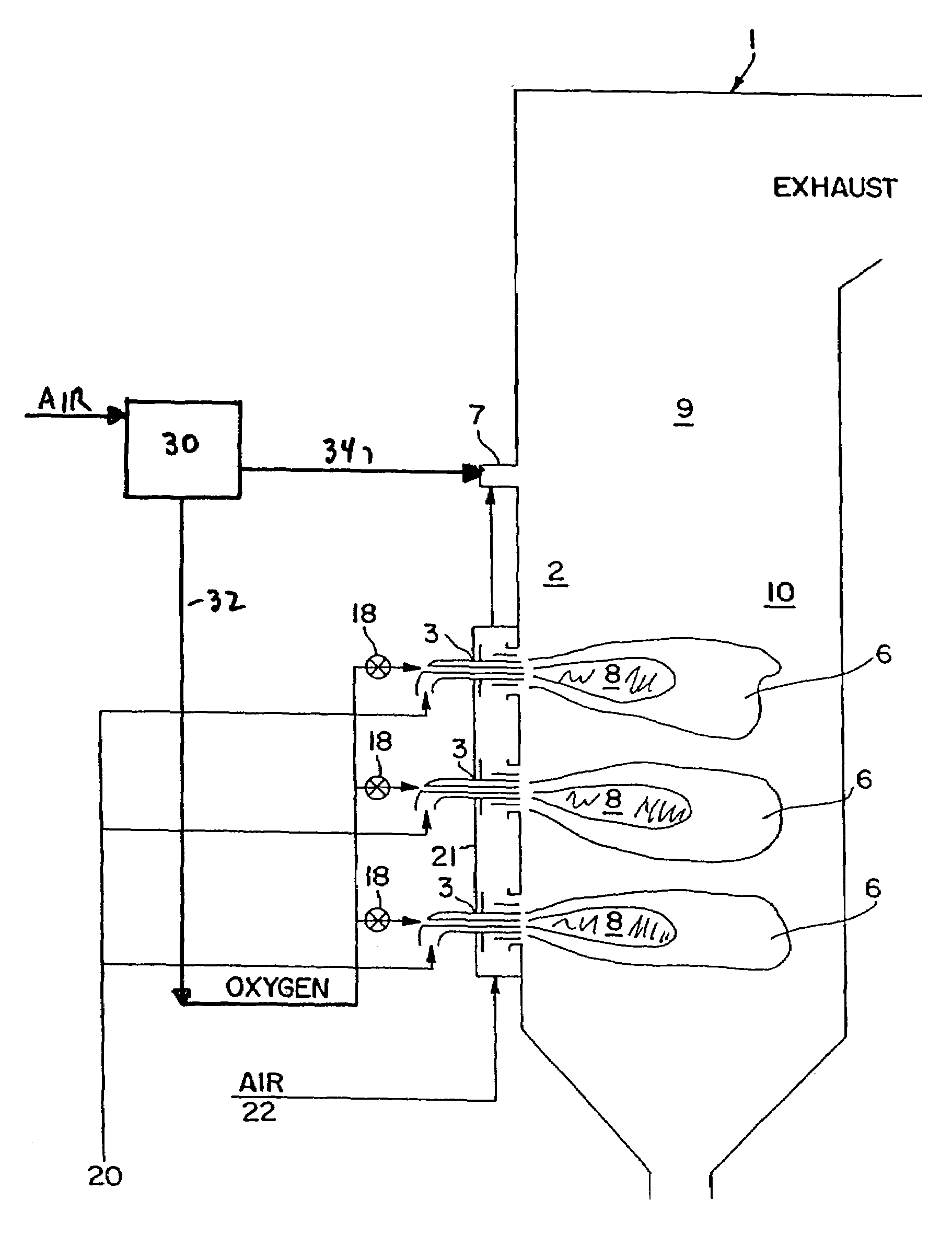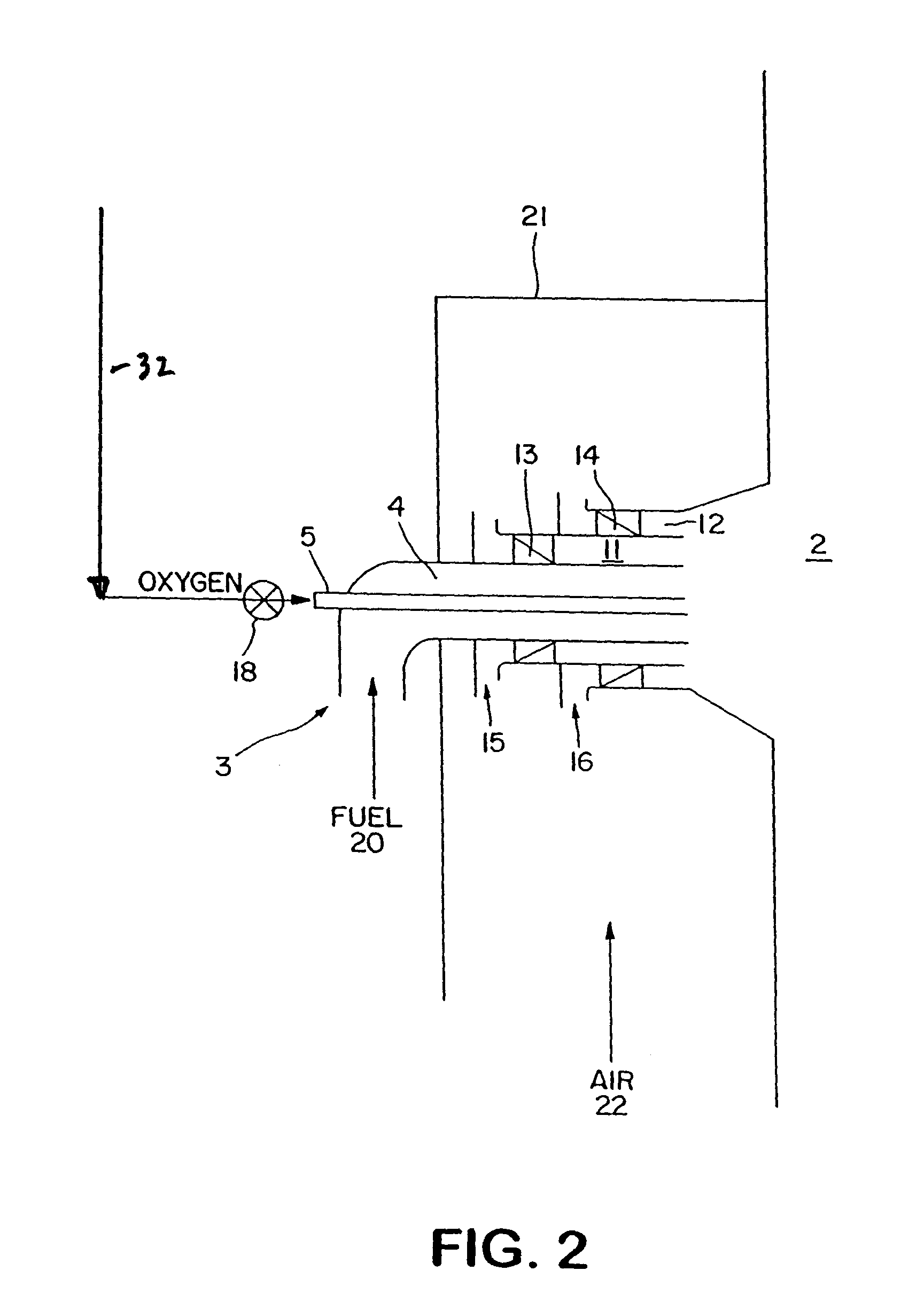Low NOx combustion using cogenerated oxygen and nitrogen streams
a technology of nitrogen stream and cogen, which is applied in the combustion of hydrocarbon fuels, combustion types, combustion types, etc., can solve the problems of increasing the pressure drop, not yet able to reach the emission limit, and difficulty in creating a very large fuel rich zone to provide a long enough residence time for maximum nox reduction, etc., to reduce the conversion of fuel nitrogen species, reduce the formation of fuel nox, and reduce the combustion temperature
- Summary
- Abstract
- Description
- Claims
- Application Information
AI Technical Summary
Benefits of technology
Problems solved by technology
Method used
Image
Examples
Embodiment Construction
[0056]The invention will be described with reference to the Figures, although a description that refers to the Figures is not intended to limit the scope of that which is considered to be the present invention.
[0057]FIG. 1 shows combustion device 1, which can be any apparatus wherein combustion is carried out in the interior 2 of the device. Preferred combustion devices include furnaces and boilers which are used to generate steam to generate electric power by conventional means, not shown. Combustion in the combustion device produces flue gas which leaves the combustion device via a stack at the top.
[0058]Each burner 3 in a sidewall or end wall of combustion device 1 feeds fuel, air and oxygen from sources thereof outside the combustion device 1 into the interior 2 of combustion device 1. Suitable fuels include hydrocarbon liquids, such as fuel oil, and also include pulverulent hydrocarbon solids, a preferred example of which is pulverized coal or petroleum coke.
[0059]As seen in FI...
PUM
 Login to View More
Login to View More Abstract
Description
Claims
Application Information
 Login to View More
Login to View More - R&D
- Intellectual Property
- Life Sciences
- Materials
- Tech Scout
- Unparalleled Data Quality
- Higher Quality Content
- 60% Fewer Hallucinations
Browse by: Latest US Patents, China's latest patents, Technical Efficacy Thesaurus, Application Domain, Technology Topic, Popular Technical Reports.
© 2025 PatSnap. All rights reserved.Legal|Privacy policy|Modern Slavery Act Transparency Statement|Sitemap|About US| Contact US: help@patsnap.com



